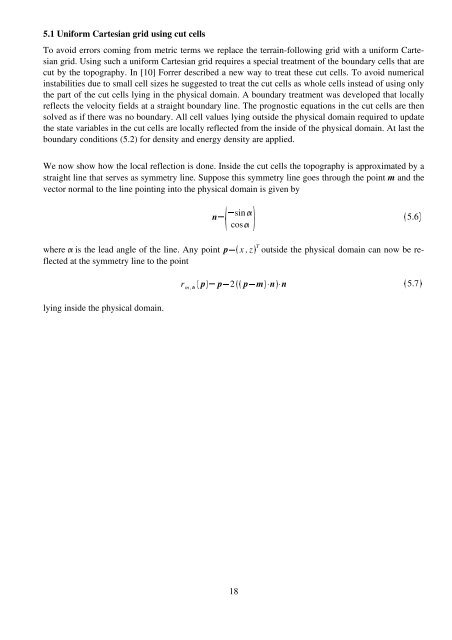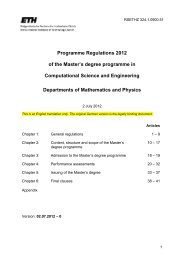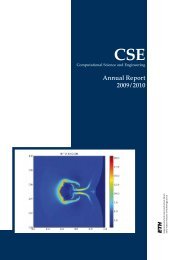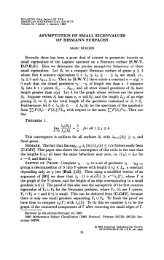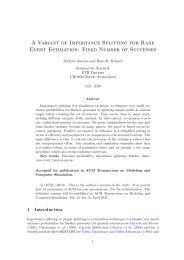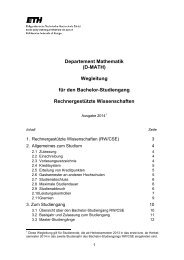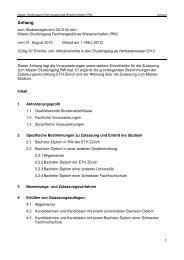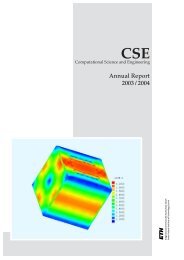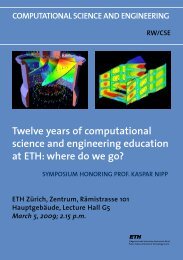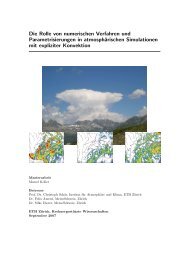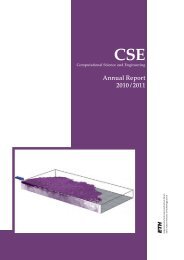A 2D Finite Volume Non-hydrostatic Atmospheric Model ...
A 2D Finite Volume Non-hydrostatic Atmospheric Model ...
A 2D Finite Volume Non-hydrostatic Atmospheric Model ...
You also want an ePaper? Increase the reach of your titles
YUMPU automatically turns print PDFs into web optimized ePapers that Google loves.
m ,J p " p 29p m " ?2?5.1 Uniform Cartesian grid using cut cellsTo avoid errors coming from metric terms we replace the terrain-following grid with a uniform Cartesiangrid. Using such a uniform Cartesian grid requires a special treatment of the boundary cells that arecut by the topography. In [10] Forrer described a new way to treat these cut cells. To avoid numericalinstabilities due to small cell sizes he suggested to treat the cut cells as whole cells instead of using onlythe part of the cut cells lying in the physical domain. A boundary treatment was developed that locallyreflects the velocity fields at a straight boundary line. The prognostic equations in the cut cells are thensolved as if there was no boundary. All cell values lying outside the physical domain required to updatethe state variables in the cut cells are locally reflected from the inside of the physical domain. At last theboundary conditions (5.2) for density and energy density are applied.We now show how the local reflection is done. Inside the cut cells the topography is approximated by astraight line that serves as symmetry line. Suppose this symmetry line goes through the point m and thevector normal to the line pointing into the physical domain is given byG sinGIH cosnCED£F5.63Toutside the physical domain can now be re-A where is the lead angle of the line. Any pB pointflected at the symmetry line to the pointx , z@n " n5.7@lying inside the physical domain.18


